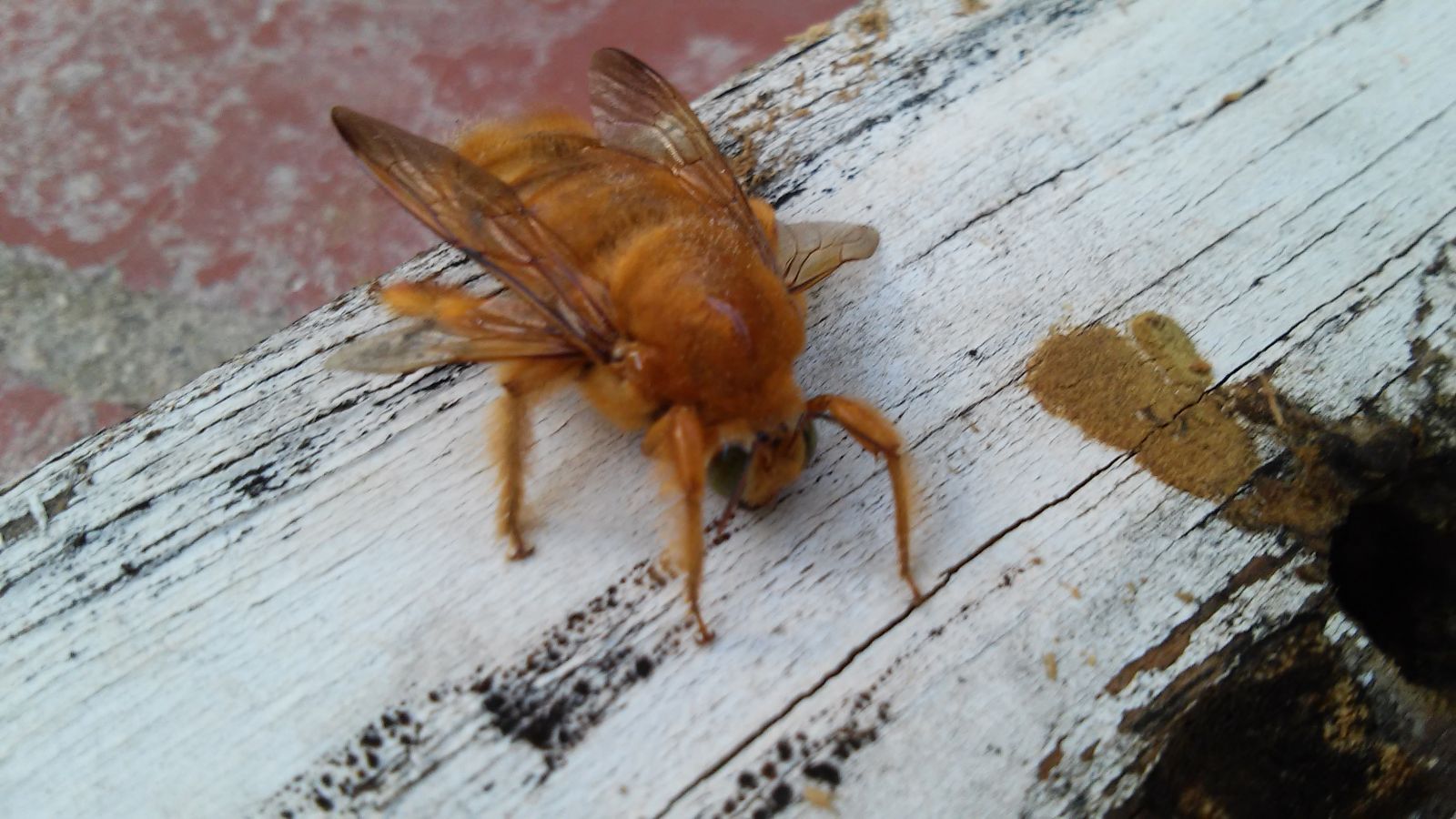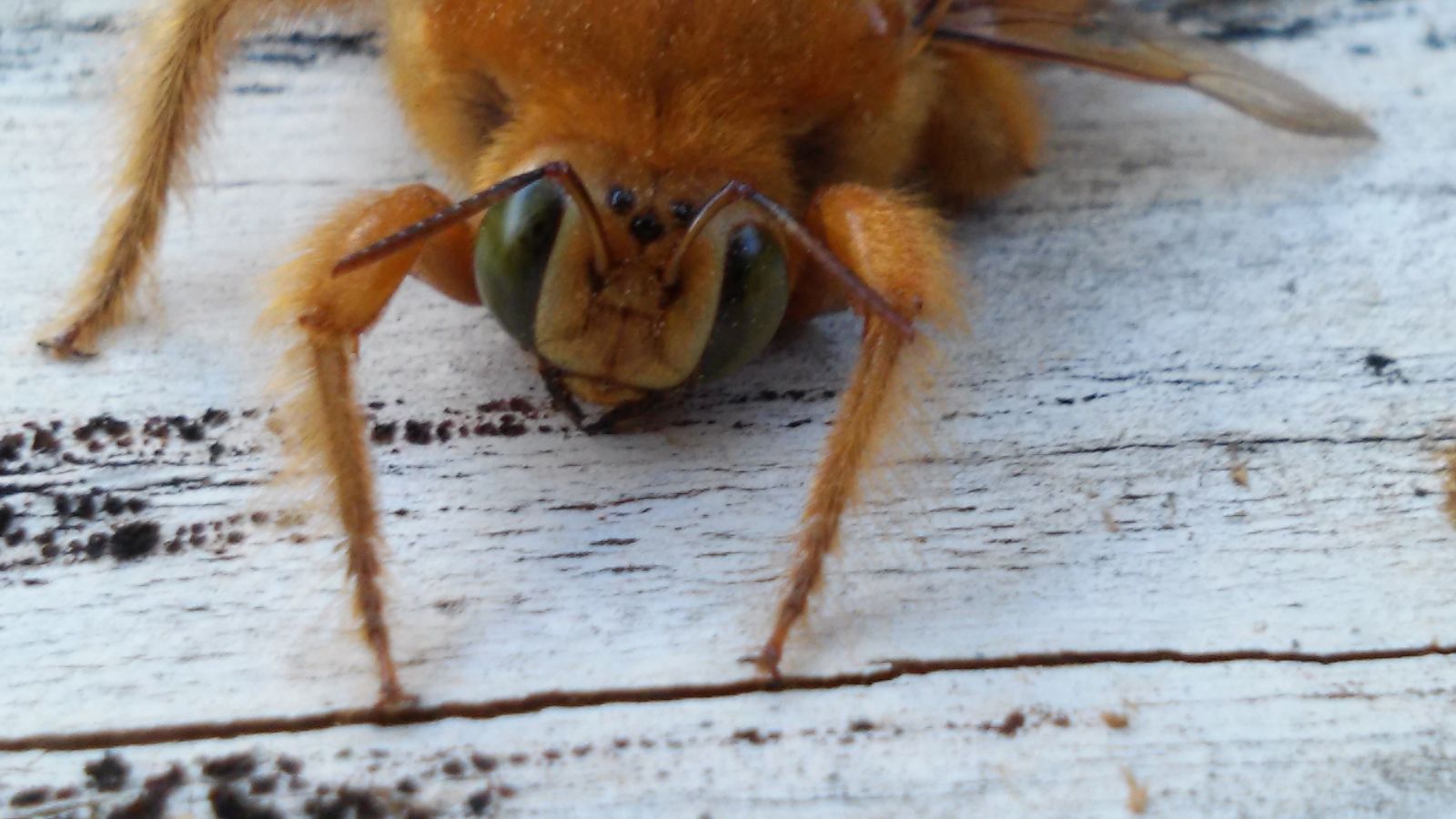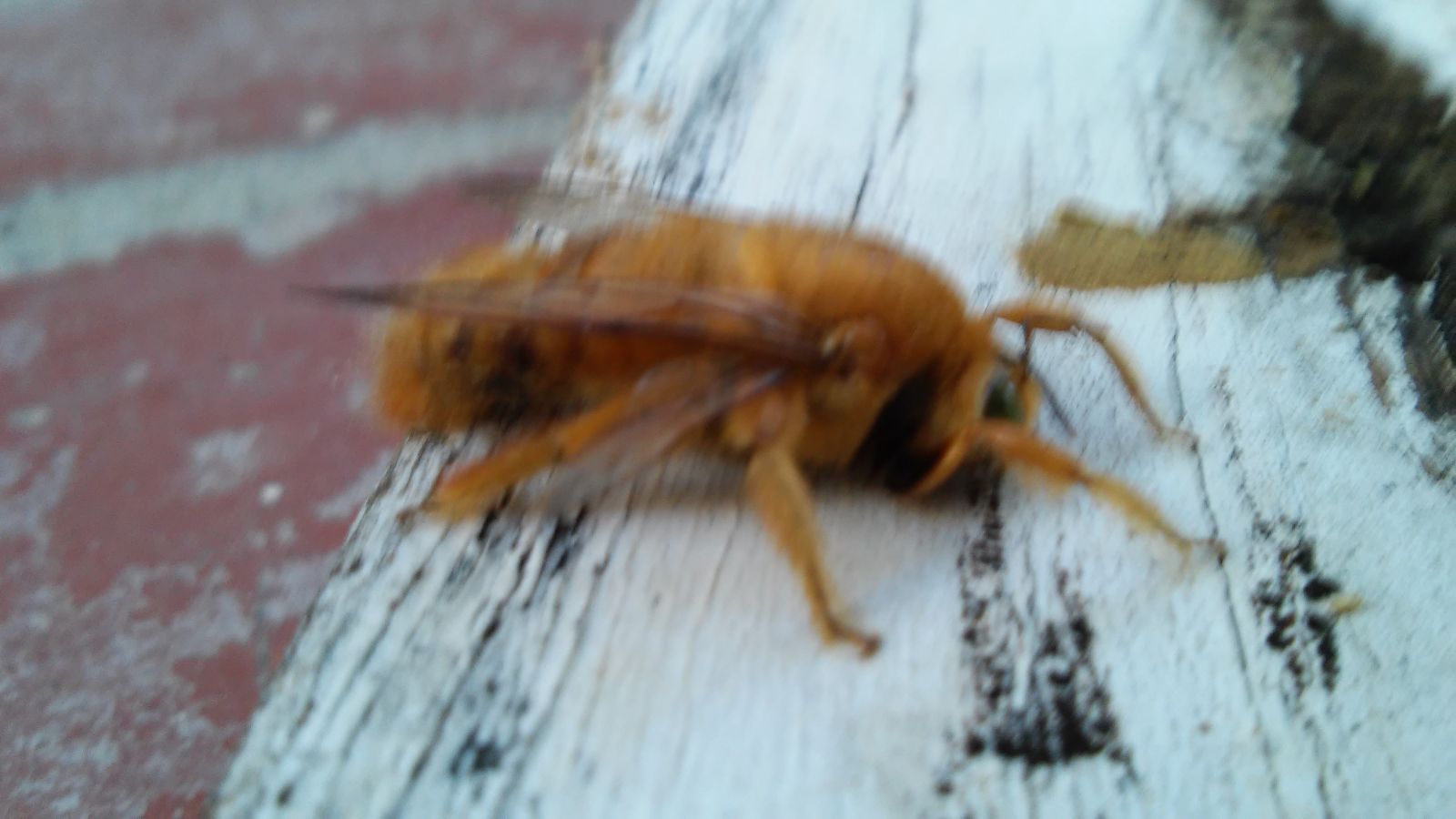Is this some kind of carpenter bee or something that died as a callow or something? That hole is where some kind of bumblebee or carpenter bee has moved out of (or) died. Is this the same species that just died as a callow?




Is this some kind of carpenter bee or something that died as a callow or something? That hole is where some kind of bumblebee or carpenter bee has moved out of (or) died. Is this the same species that just died as a callow?



The wings appear fully scleritized, so I would not think this was a "callow" anything. Such terms don't really apply to insects other than ants.
I think this may be the male reproductive caste, but someone with a background in bees would know much more definitively than I.
Apid bee.
Edited by James C. Trager, January 16 2015 - 4:18 AM.
This is a bee in family Apidae, probably Centris, Anthophora or relative. Most are greyish, or more bumble bee-ish - Nice color.
Edited by James C. Trager, January 16 2015 - 4:20 AM.
Omg. So cute and fluffeh.
Wow that is an awsome looking bee. Hmmm, it appears I forgot to spell awsome? Can I get some help?
Its a male carpenter bee! nice find!
Yup male Xylocopa varipuncta, the gold color is typical of the males of this species.
Edited by gcsnelling, December 17 2016 - 11:16 AM.
0 members, 0 guests, 0 anonymous users